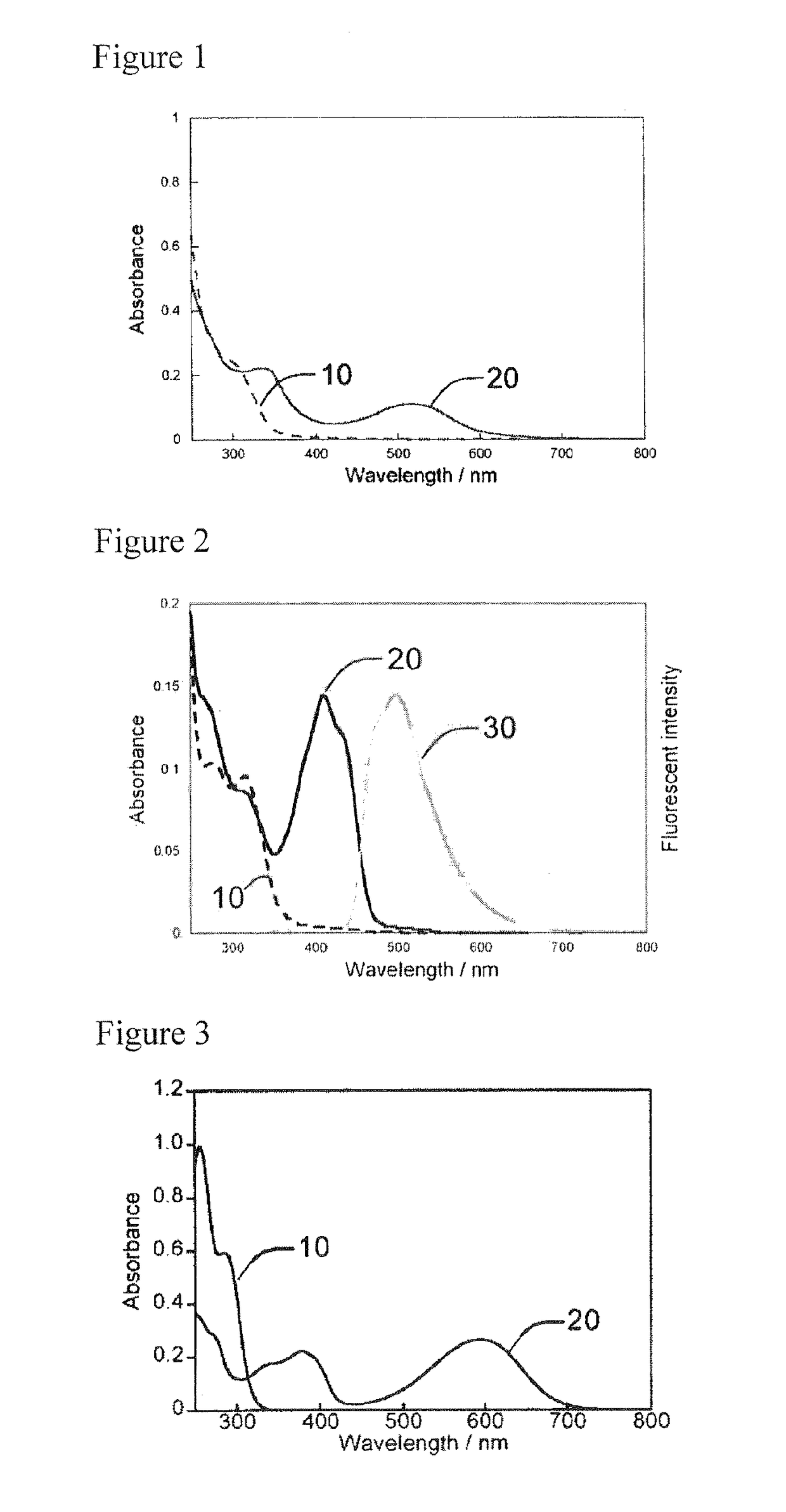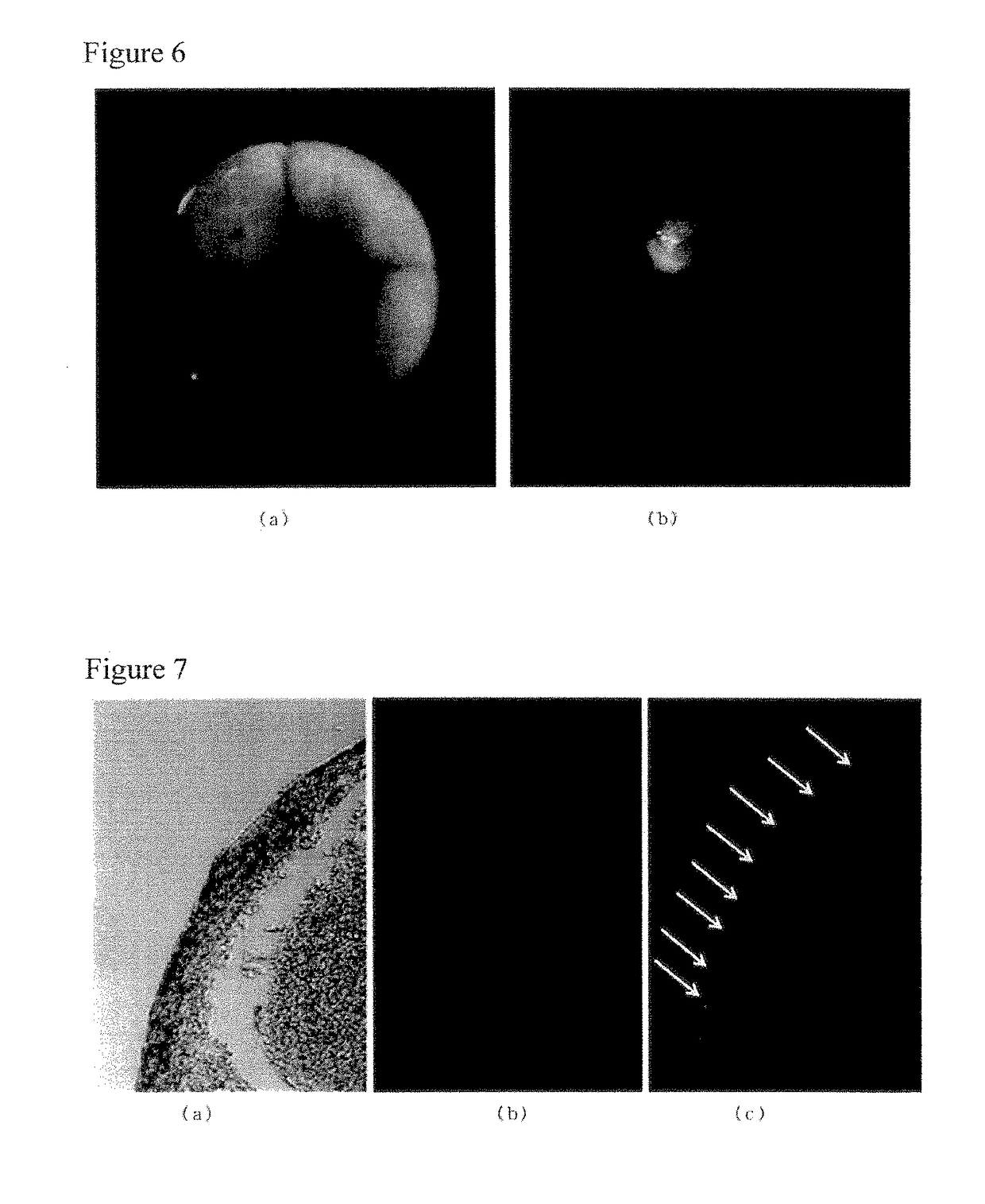Water-soluble photochromic compound
a photochromic compound and water-soluble technology, applied in the field of water-soluble photochromic molecules, can solve the problems of interaction affecting the target biomolecule, applied in bioimaging, etc., and achieve the effect of high water-solubility
- Summary
- Abstract
- Description
- Claims
- Application Information
AI Technical Summary
Benefits of technology
Problems solved by technology
Method used
Image
Examples
example 1-1
Synthesis of Thiophene Compound
[0113]The reaction scheme is shown below.
[0114]
[0115]1) Synthesis of Acyl Halogenated Sugar
[0116]A compound (bromotetraacetoglucose) composed of glucopyranose having the hydroxyl group on the position-1 carbon atom substituted with Br, and having all other hydroxyl groups protected with acetyl groups, was prepared as an acyl halogenated sugar. Specifically, the compound was synthesized in the following manner. Pentaacetyl glucopyranose (TCI) was dissolved in an excessive amount of hydrogen bromide-acetic acid solution (hydrogen bromide: acetic acid=1:1 (mol rate)), then, it was sealed and reacted for a day and a night at room temperature to quantitatively obtain bromotetraacetoglucose.
[0117]2) Synthesis of Diols of Formula (a1)
[0118]The compound is a diol in which linking group U (methylene group) binds to position-5 of the thiophene ring. The diol was prepared by the following reaction.
[0119]
[0120]The method of Non-Patent Document 5 was used to prepar...
example 1-2
Synthesis of a Thiophene Compound
[0130]A compound of formula (I-1) was produced similarly to Example 1-1, except for using lithium hydroxide instead of potassium carbonate (5 mol equivalent against diaryl ethene). A compound of formula (I-1) having 2 hydroxyl groups protected by acetyl groups was obtained as a result. The obtained compound included 2 acetyl groups. The yield in the deprotection reaction was 56%.
example 2
Synthesis of Benzothiophene Sulfone
[0131]The reaction scheme is shown below.
[0132]
[0133]1) Synthesis of Diols of Formula (a2)
[0134]The compound is a diol including benzothiophene rings binding to linkage groups U (methylene group) at position-6. The diol was prepared by the following reaction.
[0135]
[0136]A compound of formula (j2) prepared by the method of Non-Patent Document 6 was formylated to obtain a diformyl of formula (k2).
[0137]NaBH4 (51 mg, 2 eq.) was added to the THF-MeOH (3 mL / 3 mL) solution of the diformyl (350 mg, 667 μmol) at 0° C. in two separate instances, then the solution was agitated at 0° C. for 4 hours. The reaction solution was diluted with ethyl acetate, then the organic layer was washed with water (3 times) and with saturated saline solution (once) in that sequence, and dried with sodium sulfuric acid. A drying agent was filtered out and the solvent was decompressed / removed, and the residue was refined by column chromatography (hexane:ethyl acetate=2:1) to obt...
PUM
| Property | Measurement | Unit |
|---|---|---|
| temperature | aaaaa | aaaaa |
| temperature | aaaaa | aaaaa |
| absorption wave length | aaaaa | aaaaa |
Abstract
Description
Claims
Application Information
 Login to View More
Login to View More - R&D
- Intellectual Property
- Life Sciences
- Materials
- Tech Scout
- Unparalleled Data Quality
- Higher Quality Content
- 60% Fewer Hallucinations
Browse by: Latest US Patents, China's latest patents, Technical Efficacy Thesaurus, Application Domain, Technology Topic, Popular Technical Reports.
© 2025 PatSnap. All rights reserved.Legal|Privacy policy|Modern Slavery Act Transparency Statement|Sitemap|About US| Contact US: help@patsnap.com



